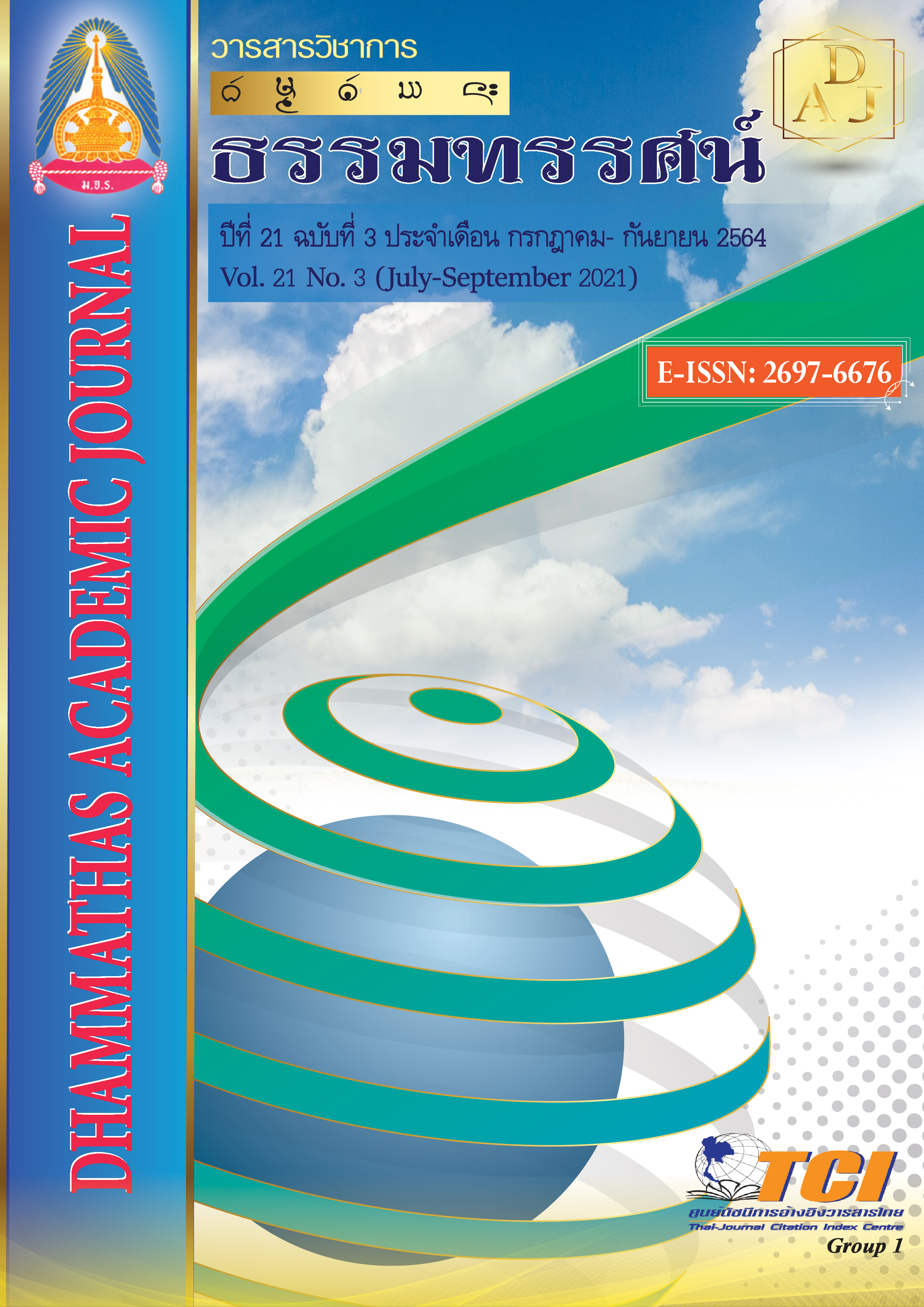การศึกษาความพึงพอใจในการใช้ Google Form เพื่อฝึกทักษะการฟังภาษาอังกฤษด้วยตนเองของนักศึกษาชั้นปีที่ 1 มหาวิทยาลัยธรรมศาสตร์ ศูนย์ลําปาง
Main Article Content
บทคัดย่อ
การวิจัยครั้งนี้ มีวัตถุประสงค์เพื่อ 1) ศึกษาระดับความพึงพอใจของนักศึกษาต่อการใช้ Google Form ในการฝึกทักษะการฟังภาษาอังกฤษด้วยตนเองในด้านการบริหารจัดการเวลา ด้านการใช้สื่อและด้านการวัดและประเมินผล 2) ศึกษาข้อเสนอแนะของนักศึกษาในการนํา Google Form เข้ามาใช้ในการฝึกพัฒนาทักษะการฟังในการเรียนการสอนรายวิชาภาษาอังกฤษในอนาคต เป็นการวิจัยเชิงปริมาณ กลุ่มตัวอย่างในการศึกษาความพึงพอใจในการฝึกทักษะการฟังภาษาอังกฤษด้วยตนเองผ่าน Google Apps ได้แก่ นักศึกษาชั้นปีที่ 1 คณะนิติศาสตร์ คณะสังคมสงเคราะห์ศาสตร์ คณะสาธารณสุขศาสตร์และวิทยาลัยสหวิทยาการ แห่งมหาวิทยาลัยธรรมศาสตร์ ศูนย์ลําปาง ที่ลงทะเบียนเรียนในรายวิชาภาษาอังกฤษ 2 ในปีการศึกษา 2/2561 จำนวนทั้งสิ้น 74 คน เครื่องมือที่ใช้ในการวิจัย คือ 1) แบบฝึกทักษะการฟังภาษาอังกฤษด้วยตนเองผ่าน Google Form 2) แบบสอบถามความพึงพอใจในการใช้สื่อ Google Form เพื่อฝึกทักษะการฟังภาษาอังกฤษด้วยตนเอง ส่วนข้อมูลที่ได้จากการวิจัยได้นำมาทำการวิเคราะห์ข้อมูลโดยการหาค่าร้อยละ ค่าเฉลี่ย ค่าเบี่ยงเบนมาตรฐาน และการวิเคราะห์เนื้อหาจากข้อเสนอแนะ
ผลการวิจัยพบว่า
1. นักศึกษาที่ใช้ Google Form ในการฝึกทักษะการฟังภาษาอังกฤษด้วยตนเองด้านการบริหารจัดการเวลา ด้านการใช้สื่อและด้านการวัดและประเมินผล พบว่า มีความพึงพอใจอยู่ในระดับมากที่สุด ด้านความเป็นส่วนตัว ด้านผลสัมฤทธิ์การเรียนรู้ และด้านบทสนทนา มีความเหมาะสมในระดับมากที่สุดและมาก ค่าเฉลี่ยรวมเท่ากับ 4.77, 4.22 และ 4.18 ตามลำดับ
2. ข้อเสนอแนะในการนํา Google Form เข้ามาใช้ในการฝึกพัฒนาทักษะการฟังในการเรียนการสอนรายวิชาภาษาอังกฤษในอนาคต พบว่า อาจารย์ผู้สอนสามารถนำสื่อออนไลน์ที่หลากหลายมาประยุกต์ใช้ในรายวิชาการฟังและพูดภาษาอังกฤษ และสามารถนำแอพพลิเคชั่นที่เกี่ยวกับการฟังและการพูดภาษาอังกฤษ เช่น YouTube, English Talk และ Learn English มาประยุกต์ใช้กับการเรียนการสอน
Article Details
เอกสารอ้างอิง
กรมวิชาการ. (2545). การวิจัยเพื่อการพัฒนาการเรียนรู้ตามหลักสูตรสถานศึกษาขั้นพื้นฐาน. กรุงเทพฯ: คุรุสภาลาดพร้าว.
กระทรวงศึกษาธิการ. (2551). หลักสูตรแกนกลางการศึกษาขั้นพื้นฐานพุทธศักราช 2551. กรุงเทพฯ: กระทรวงศึกษาธิการ.
ธนะวัฒน์ วรรณประภา. (2560). สื่อสังคมออนไลน์กับการศึกษา. วารสารศึกษาศาสตร์ มหาวิทยาลัยมหาสารคาม, 11(1), 7-20.
พินิจ มีคำทอง. (2561). เกิ้ลแอปพลิเคชั่น: นวัตกรรมทางการศึกษาสำหรับครูยุคศตวรรษที่ 21. วารสารวิชาการและวิจัย มหาวิทยาลัยภาคตะวันออกเฉียงเหนือ, 8(3), 72-80.
ไพรัชนพ วิริยวรกุล และดวงกมล โพธิ์นาค. (2557). Google Apps for Education นวัตกรรมทางการศึกษายุคดิจิทัล. วารสารวิจัยมหาวิทยาลัยราชภัฏสวนดุสิต, 7(3), 103-111.
สำนักงานปลัดกระทรวงศึกษาธิการ. (2559). แผนปฏิบัติราชการประจำปีงบประมาณ 2560 ของสำนักงานปลัดกระทรวงศึกษาธิการ. กรุงเทพฯ: สำนักนโยบายและยุทธศาสตร์.
สำนักงานเลขาธิการสภาการศึกษา. (2557). แนวทางการพัฒนาการศึกษาไทยกับการเตรียมความพร้อมศตวรรษที่ 21. (รายงานการวิจัย). กรุงเทพฯ: สำนักงานเลขาธิการสภาการศึกษา.
สุภารัตน์ แพหีต และณัฐสุดา กาญจน์เจริญ. (2559). ประเภทของสื่อออนไลน์. เข้าถึงได้จาก https://sites.google.com/site/technologysvc/prapheth-khxng-sangkhm-xxnlin
Johnson, Elaine B. (2002). Contextual teaching and Learning: What it is and why it’s here to stay. Thousand Oaks, California: Corwin Press.

